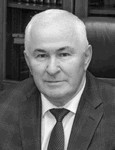Indicators of time perception among students in special correctional and general education schools
Keywords:
time perception, 10-year-old students, auditory deprivation.Abstract
Objective of the study was to determine indicators of time perception in 10-year-old children studying in correctional and general education schools.
Methods and structure of the study. The examination involved 78 healthy primary schoolchildren (boys 10 years old) and 34 of their peers suffering from sensorineural hearing loss (III-IV degree). We used the computer program “Researcher of Temporal and Spatial Properties of Humans.” The “Individual Minute” (IM) test was used to reproduce the duration of the time interval.
Results and conclusions. In healthy schoolchildren and in students with auditory deprivation, different numbers of children with a shortened IM, a long IM and a normal IM were noted. There are significant differences in the studied groups of children with shortened IM. No differences in indicators were recorded when reproducing the duration of a time interval with a light pulse.
References
Boyko E.I. Vremya reakcii cheloveka. Moscow: Meditcina publ., 1964. 440 p.
Bushov Yu.V., Bormotova G.A., Ivanov A.S. Osobennosti uznavaniya dlitelnosti prostykh i kompleksnykh stimulov. Vestnik TGU, 2004.
Gmurman V.E. Teoriya veroyatnostey i matematicheskaya statistika. Moscow: Vysshaya shkola publ., 2003. 481 p.
Davidenko N.V. Osobennosti prostranstvennoy orientacii mladshix shkolnikov. Vestnik MGOU, seriya «Psixologicheskie nauki». Moscow: MGOU publ., 2007. No.1. рp. 74-80.
Drushevskaya V.L. Pokazateli individualnogo vospriyatiya vremeni u akrobatov raznoy kvalifikacii [. Fizicheskaya kultura, sport - nauka i praktika. Krasnodar. 2010. No. 4. pp. 33-35.
Ignatova E.B. Opredelenie individualnoy minuty [Electronic resource]. Available at: http:www.medn.ru/statyi/diagnostika/opredelenie-indnvndualnoy-minutyi.html.
Koryagina Yu.V. Xronobiologicheskie osobennosti adaptacii k zanyatiyam razlichnymi vidami sporta. Teoriya i praktika fizicheskoy kultury. 2010. No. 7. pp. 24-28.
Rubinshteyn S.L. Osnovy obshhey psixologii. SPb.: Piter publ., 2003. 720 p.
Halberg F., Chibisov S., Radysh I., Cornelissen G., Bakulin A. Time structures (chronomes) in us and around us. Moscow: PFUR publ., 2005, 186 p.


